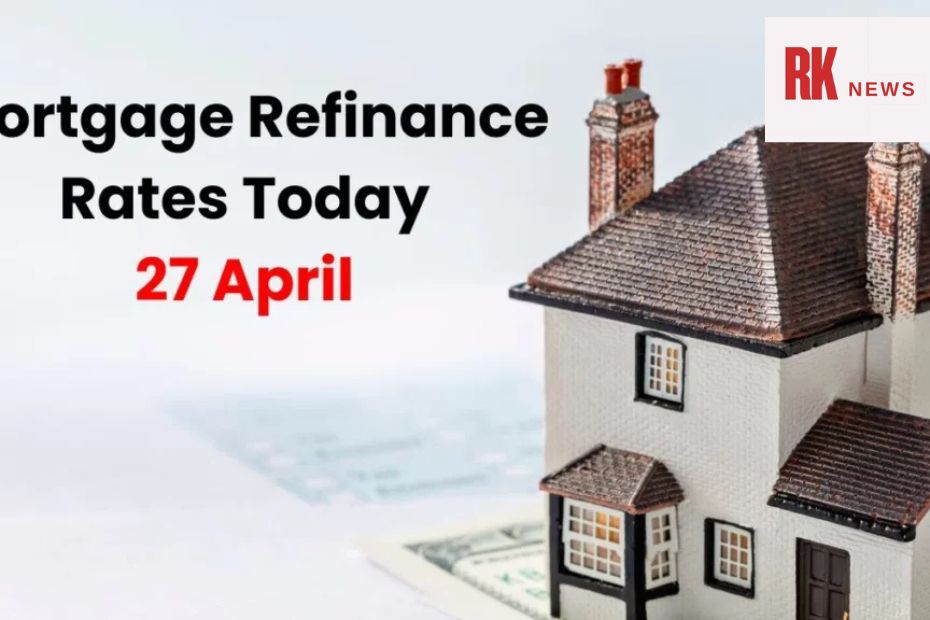Mortgage Refinance Rates: Homeowners eager to refinance might see a positive turn this weekend: mortgage refinance rates have edged down a bit, possibly creating a chance to secure a more favorable deal.
Recent national figures from Zillow reveal the average 30-year fixed refinance rate fell to 6.72%, compared to last week’s numbers. Similarly, the 15-year fixed refinance rate decreased to 6.10%, marking a significant 11 basis points drop. Although rates are still high relative to pre-2022 levels, this week’s reduction might provide some respite for those looking to refinance and enjoy long-term savings.
Mortgage Refinance Rates Today – April 27, 2025
| Loan Type | Rate (%) |
|---|---|
| 30-year Fixed | 6.72% |
| 20-year Fixed | 6.34% |
| 15-year Fixed | 6.10% |
| 5/1 ARM | 7.60% |
| 7/1 ARM | 7.49% |
| 30-year VA | 6.32% |
| 15-year VA | 5.85% |
| 5/1 VA ARM | 6.31% |
Note: Rates are national averages and may differ based on lender, credit history, and location.
Why Refinance Now?
Even though refinance rates are usually a bit above purchase mortgage rates, this week’s average decline may present a useful refinancing opportunity—particularly for borrowers with robust credit scores and substantial home equity. Refinancing now could help:
- Reduce your monthly payments
- Shorten your loan duration
- Combine debts
- Access home equity with a cash-out refinance
30-Year vs. 15-Year Refinance Which Offers Better Value?
Choosing between a 30-year and 15-year mortgage hinges on your financial objectives. A 30-year fixed refinance at today’s 6.72% rate results in lower monthly payments but a higher overall interest cost. Conversely, a 15-year fixed loan at 6.10% entails higher monthly payments but considerably less interest over the loan’s lifetime. For instance, refinancing a $300,000 mortgage:
- 30-year at 6.72% → ~$1,943/month, ~$399,700 interest over the term
- 15-year at 6.10% → ~$2,548/month, ~$159,000 interest over the term
Fixed vs. Adjustable Refinance RatesCurrently, adjustable-rate mortgages (ARMs) like the 5/1 or 7/1 ARM have higher initial rates than certain fixed loans, which is atypical. ARMs have traditionally started lower, but market uncertainties have altered this trend. Opting for a fixed-rate refinance offers predictability, with your rate staying unchanged for the entire loan duration. Amid inflation worries and upcoming Federal rate decisions, locking in now might shield you from future rate increases.
How to Qualify for the Best Mortgage Refinance Rates
Borrowers typically enjoy the lowest refinance rates if they:
- Boast a credit score above 740
- Maintain a low debt-to-income (DTI) ratio
- Make a down payment or hold significant equity
- Have stable income and job history
If you fall short of these criteria, working on boosting your credit or lowering debt before applying can help in securing a more favorable rate.
Pro Tip: Compare Multiple LendersAvoid accepting the first offer. Get preapproved by three to four lenders and compare:
- Interest rates
- Annual percentage rate (APR)
- Fees and closing costs
- Customer feedback and services
Even a 0.25% rate difference can save you thousands over the loan’s life.
What’s Next for Refinance Rates?
Despite today’s decline being positive news, the market remains sensitive to imminent economic data. Keep an eye on key reports this week, including:
- March inflation report (Wednesday)
- Q1 GDP data (Wednesday)
- April jobs report (Friday)
These insights could influence the Federal Reserve’s next steps. If data suggests an economic slowdown, the Fed might pivot towards rate cuts—a change that would likely drive refinance rates lower.
